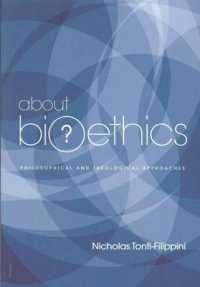Full Description
This book explores the intersection of disabilities and human trafficking, focusing on cognitive, developmental, sensory, and physical disabilities before, during, and after the trafficking experience. Human trafficking research remains a broad area of study that has not adequately covered many specific populations, services, and considerations relevant to the field. The relationship between trafficking experiences and disabilities is complex. Individuals with pre-existing disabilities may be more vulnerable to trafficking due to inadequate social safety nets. At the same time, survivors may develop disabilities as a consequence of their trafficking experiences. The research featured illustrates a relationship between access to social connections and therapeutic services and the increased risk of exploitation for individuals with disabilities. It begins a more extensive dialogue on the importance of considering disabilities when conducting trafficking research. The research also explores empirical gaps and contributes to a more comprehensive and nuanced understanding of human trafficking vulnerabilities and related needs among populations that experience a variety of disabilities. This book was originally published as a special issue of Journal of Human Trafficking.
Contents
Introduction: The Intersection of Human Trafficking and Disabilities 1. Prevalence of Neurodevelopmental, Mental, and Behavioral Disorders in a Sample of U.S. Commercially Sexually Exploited Youth, and Associations with Health and Health Care Access 2. Sex Trafficking Prevention for Youth with Intellectual and Developmental Disabilities: Service Provider Perspectives 3. Exploring Consequences of Sex Trafficking Victimization Among Individuals with and without Disabilities 4. The Complex and Marginalized Experiences of BIPOC Trafficked Women: An Examination of Disabilities, ACEs, Discrimination, and Racism 5. Deaf Populations and Human Trafficking: Risk and Protective Factors for Consideration 6. Including Measures of Disability in Prevalence Studies: Lessons from a Prevalence Estimation Study of Labor Trafficking in the Construction Industry in Houston 7. Unveiling the Long-Term Challenges: Disabilities and Post-Human Trafficking Survival - A Survivor Perspective







